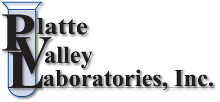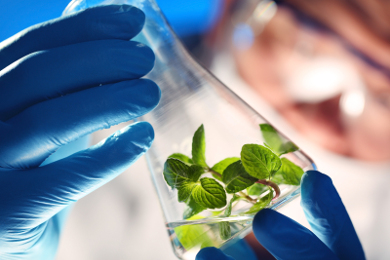Plant tissue analysis is a chemical analysis of plant leaves and other organs. Generally, a higher availability of a nutrient in the soil translates into a greater concentration of that nutrient in the plant. However, the availability of a certain nutrient in the soil is not the only factor affecting its uptake by the plant. Other factors, such as temperature, humidity, soil moisture, plant diseases etc., considerably affect the uptake of nutrients. Therefore, plant analysis reflects both nutrient availability in the soil and the nutritional status of the plant.
The concentration of nutrients in the plant is not fixed, but constantly changes. It may vary from month to month and even from day to day. The concentration of nutrients even differs between various parts of the same plant. In order to learn the rate in which a nutrient is absorbed, it is necessary to take samples from several plant parts at different growth stages. The most common uses of plant analysis are verification of visual diagnostics and identification of nutrient deficiencies or excess. Since there are many factors affecting the interpretation of plant analysis results, it is very important to take the samples correctly.
Samples should represent the general population of the plants, otherwise the results will be invalid and money and work invested will be wasted. The most important things to be considered in taking the samples are: The part of the plant sampled. The number of samples taken. Timing of taking the sample, i.e. the phenological stage of the plant. Samples should be taken from plants which are at the same physiological stage and from the same parts of the plants. It is recommended to avoid sampling plant tissues which are physiologically very young, since their nutrient content undergoes rapid changes.
Very old plant tissues are not representative as well. Younger tissues will contain more N,P and K, while in older tissues it is expected to find higher concentrations of Calcium, magnesium, manganese and boron. Plant analysis results of adjacent plants may vary considerably, even if the plants were fertilized at the same fertilizer rates. Under conditions of nutrient deficiencies, the variance between the plants is considerably greater. Interpretation of the results The nutrient content of the plant is expressed on a dry weight basis. Therefore, any condition that affects the dry weight of the collected sample will affect its nutrient composition.
For each nutrient, there is a correlation between its concentration in the plant and the yield of the plant. The curve below describes this correlation. This curve is referred to as a "yield response curve". The relationship between a nutrient concentration and the corresponding yield is determined by field trials. From this curve we can see that below a certain critical nutrient concentration, yield is decreased. An increase in the nutrient concentration above the critical concentration does not affect the yield until the nutrient concentration reaches another threshold, above which any increase of the nutrient concentration will result in yield reduction. In most cases, there is a correlation between plant analysis and soil analysis results. Soil test can be used as a predictive tool to plan fertilizer needs (before planting, for example) and to evaluate the availability of nutrients in the soil. It cannot indicate whether plants are able to uptake the nutrients and does not give any information about the nutritional status of the crop growing in the soil. Plant tissue analysis provides information about the present nutritional status of the plant and helps in verifying visual diagnosis of deficiency/toxicity symptoms. However, it does not provide enough information to explain the reason for the nutritional disorder. Sometimes plant analysis might not be sensitive enough, since above a critical nutrient level, only a small change in the nutrient concentration in the plant occurs, despite a significant increase in the nutrient availability.

